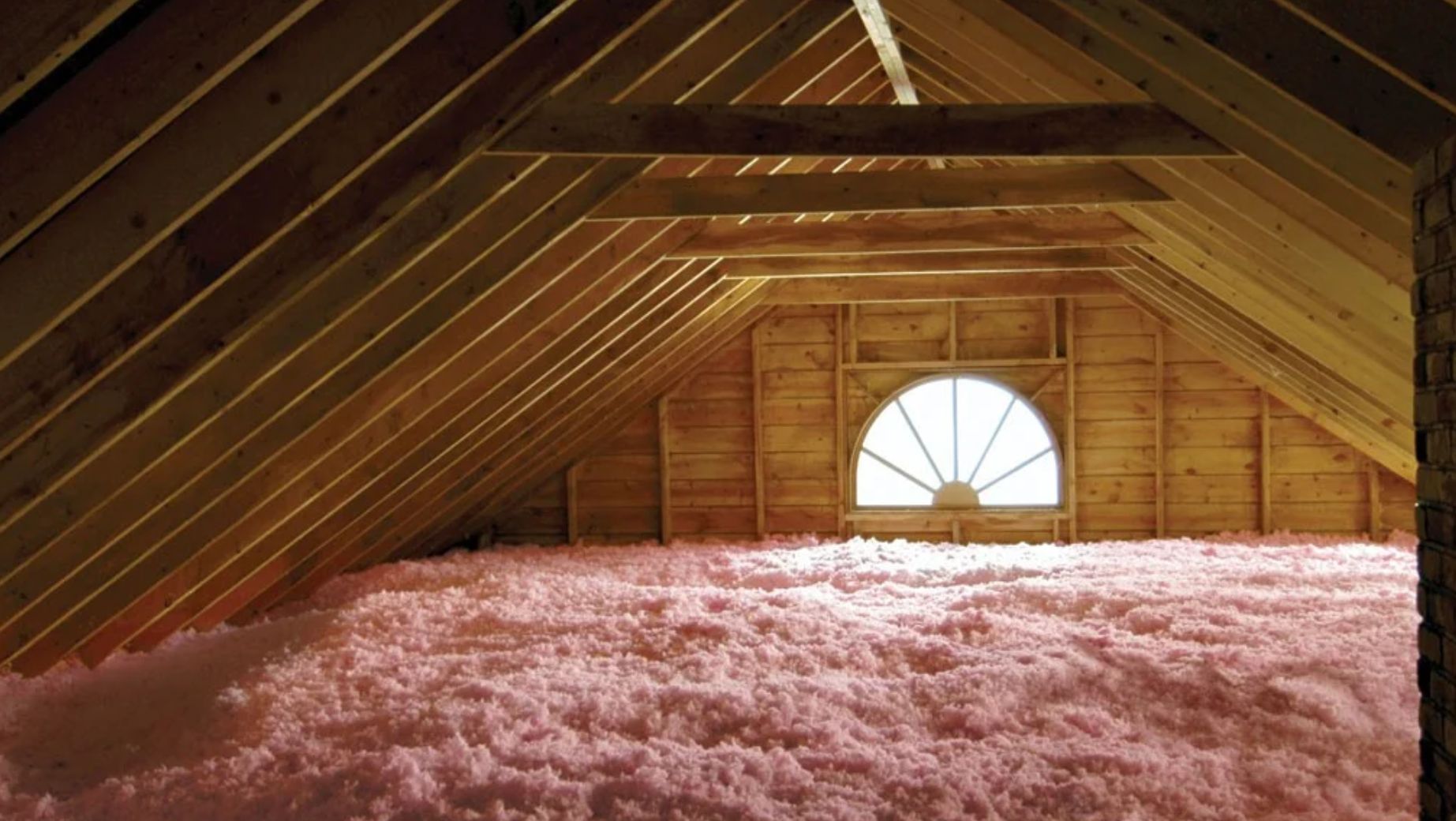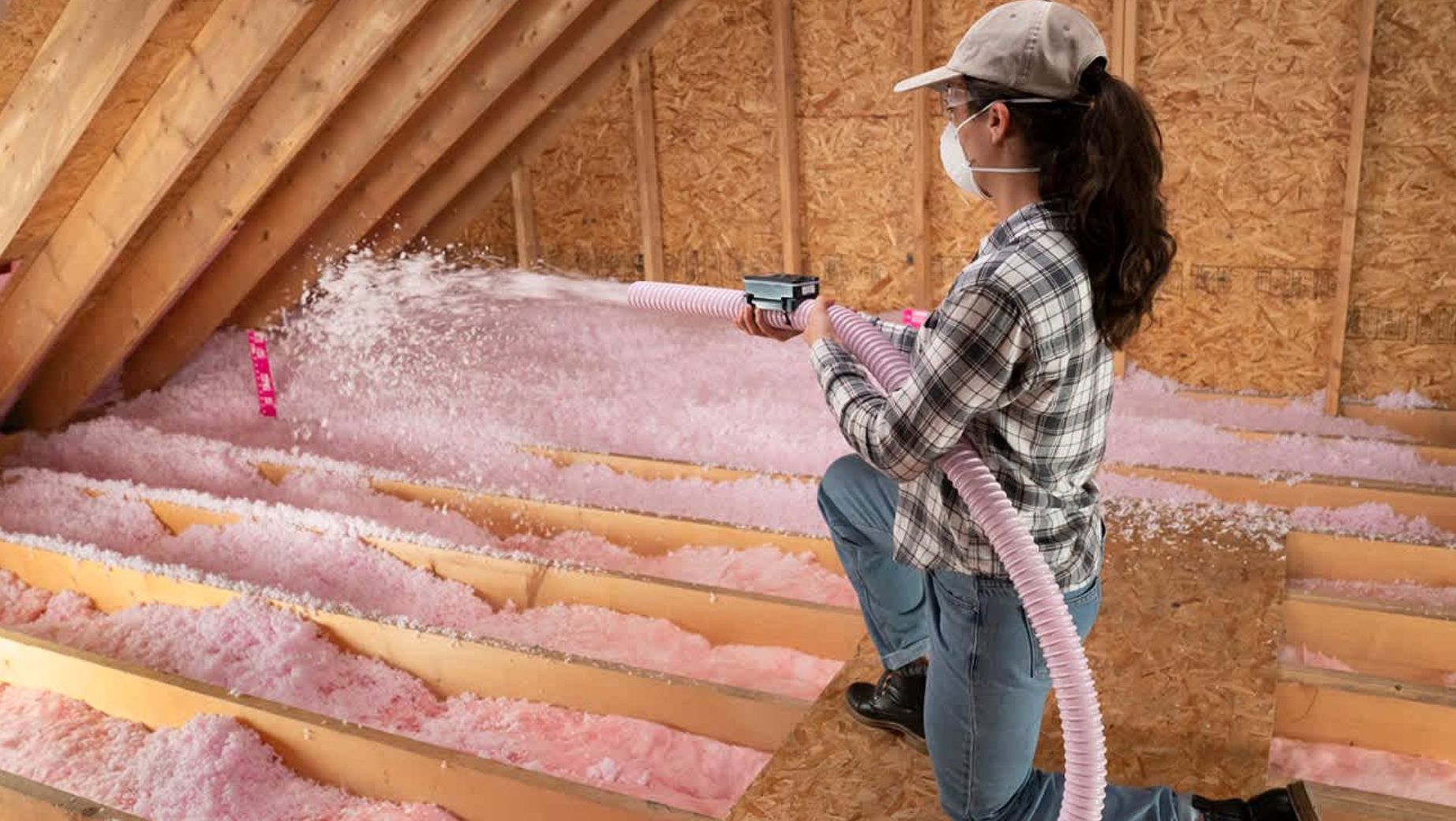
Are you feeling drafts in your home even with the heat on? One fact is clear: attic insulation plays a huge role. This article will show you how picking the right R-value can make your house more comfy and save money.
Let’s get to it!
What is Attic Insulation R-Value?
Think of R-value like a superhero cape for your house. The higher the number, the stronger the cape.
It tells you how good insulation is at stopping heat from sneaking in or out of your attic. The goal is to keep cozy in winter and cool in summer without breaking the bank.
For attics, experts often recommend starting with an R-30 value. But if you live where it gets really cold or hot, you might need between R-49 and R-60 to keep things comfy. This range helps because where you live changes what your house needs to fight off weather woes effectively.
Importance of Proper R-Value in Attic Insulation
Picking the right R-value for attic insulation is like choosing the best winter coat. You want one that keeps you warm but not too hot. A high R-value means better warmth keeping in your house.
This is crucial because it helps keep your home’s temperature just right, both during summer and winter. Imagine having a cozy room in December without cranking up the heater or a cool one in July without blasting the AC. That’s what proper insulation does.
Living in colder areas demands higher R-values to trap heat inside. It’s like packing for Alaska; you wouldn’t bring just a light jacket, right? The same goes for your attic. More insulation equals more warmth staying where it should, reducing how much your heating system has to work.
This cuts down on energy costs big time! On top of that, it eases strain on your HVAC unit, making it last longer.

Properly insulating helps control moisture too. Without good insulation, dampness can sneak in and invite mold for an unwelcome stay. Think of high R-value insulation as a trusty umbrella that keeps unwanted guests out—keeping you dry and comfortable all year round.
Factors That Influence R-Value Requirements
Factors like the climate and the type of insulation material can impact R-value requirements, so understanding these influences is essential for effective attic insulation. Dive into the details to maximize your home’s efficiency!
Climate and Regional Variations
Your attic insulation needs to change with the weather. In cold places, you might need more insulation to keep heat in. Warm spots have different needs. Think of it like dressing for the weather: heavy coat for snow, light jacket for a breezy day.
Now, let’s talk about what your insulation is made of.
Type of Insulation Material
Now that we have talked about how different climates and regions require varying R-values, let’s discuss the different types of insulation materials commonly used in attics. The three most common types are fiberglass, spray foam, and cellulose.
Fiberglass has an R-value range of 2.2 to 3.8 per inch, while cellulose has a higher R-value range of 3.1 to 3.8 per inch.
Fiberglass is widely used due to its affordability and easy installation process, while spray foam provides exceptional air sealing properties but comes with a higher price tag. Cellulose insulation is known for being environmentally friendly as it’s mostly made from recycled paper products treated with fire-retardant chemicals.
These varied options offer homeowners flexibility in choosing the best insulation material suited for their specific needs and budget constraints.
Benefits of Maximizing Attic Insulation R-Values
Maximizing attic insulation R-values brings improved energy efficiency, leading to reduced heating and cooling costs. It also helps in creating a more comfortable indoor environment for your home.
Improved Energy Efficiency
Upgrading attic insulation can enhance energy efficiency. It helps maintain consistent indoor temperatures and lower energy bills. Proper ventilation in the attic is crucial for preventing moisture buildup, which preserves insulation effectiveness and energy efficiency.

Regular inspections of attic insulation every 2-3 years are essential for maintaining optimal energy efficiency. Upgrading insulation can lead to long-term energy savings and improved home efficiency.
Reduced Heating and Cooling Costs
Maximizing attic insulation R-values can lead to reduced heating and cooling costs. By providing resistance to heat flow, attic insulation helps maintain desired temperatures in your home.
This improves energy efficiency, lowering your energy bills over time. Additionally, proper insulation reduces the workload on your heating and cooling systems, extending their lifespan and saving you money on potential repairs or replacements.
Attic insulation also plays a significant role in reducing the amount of energy needed for heating and cooling. As a result, it lowers greenhouse gas emissions associated with climate change.
Conclusion
Understanding attic insulation R-values is crucial for maximizing home efficiency. By ensuring proper insulation, you can improve energy efficiency and reduce heating and cooling costs.
Different factors influence the R-value requirements, including climate, type of insulation material, and regional variations. It’s essential to choose the right type of insulation that suits your home’s specific needs.





